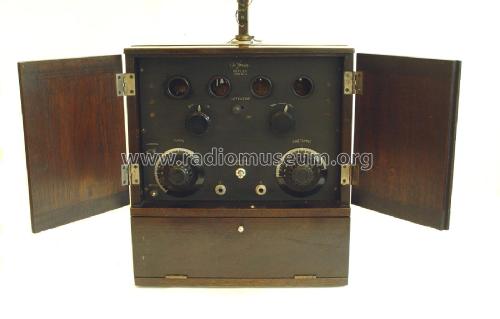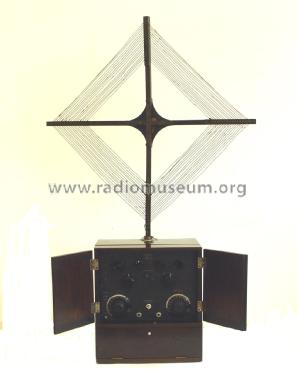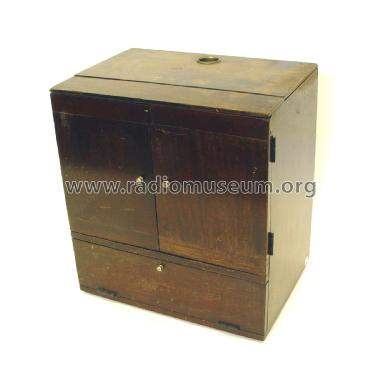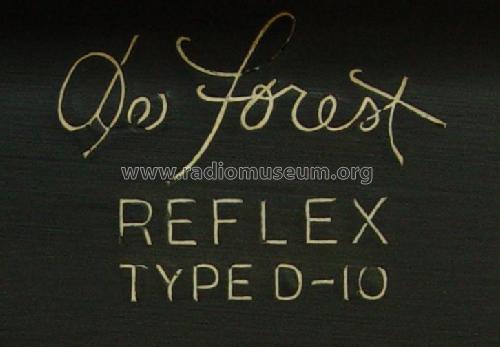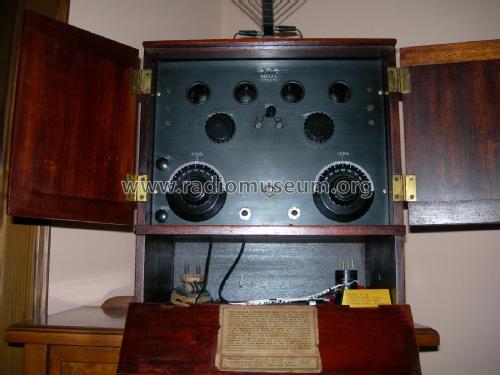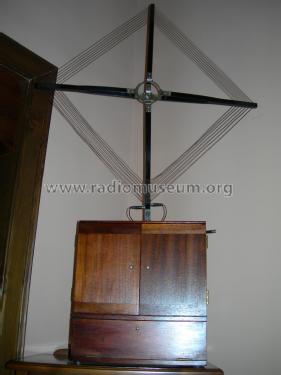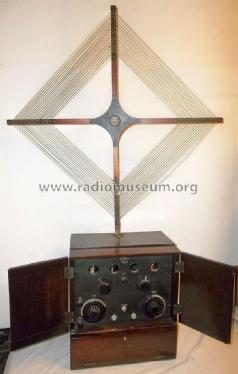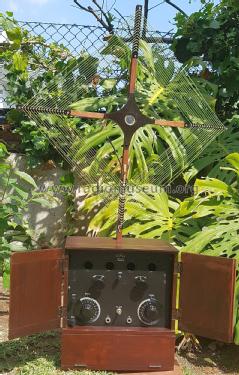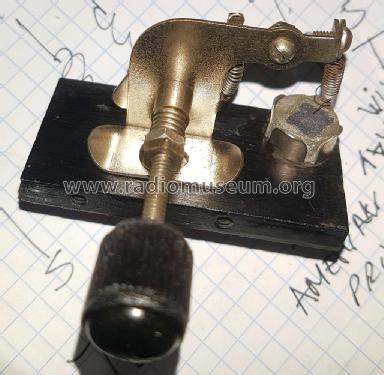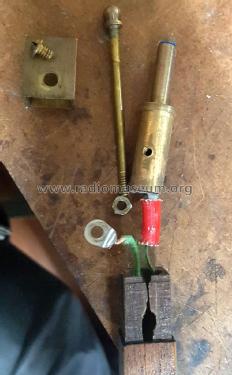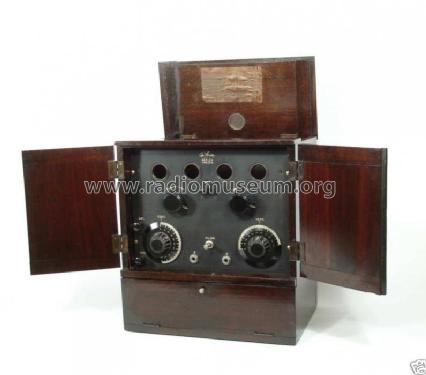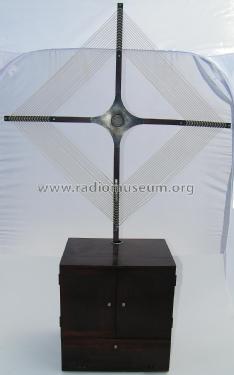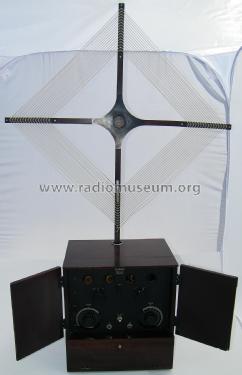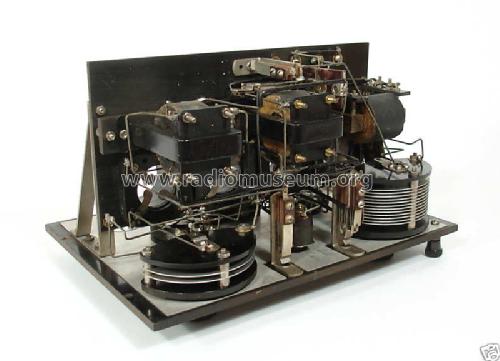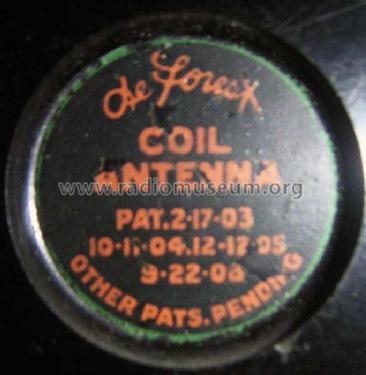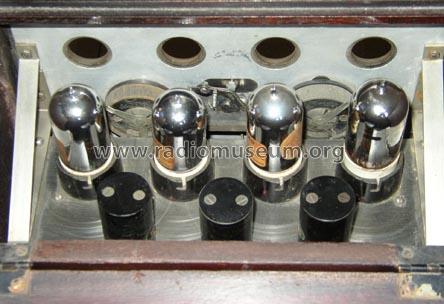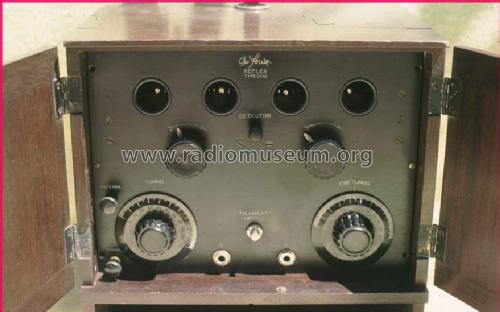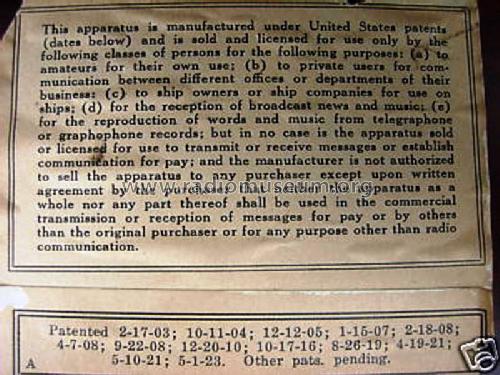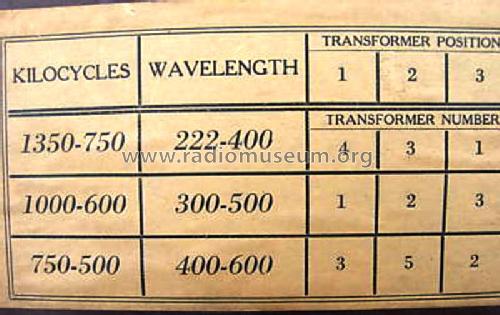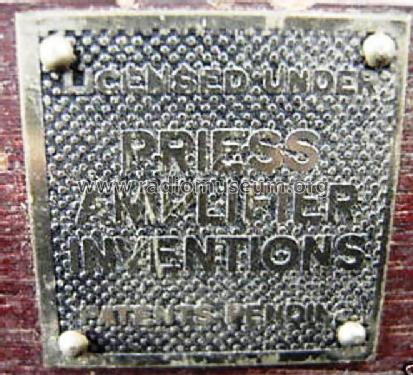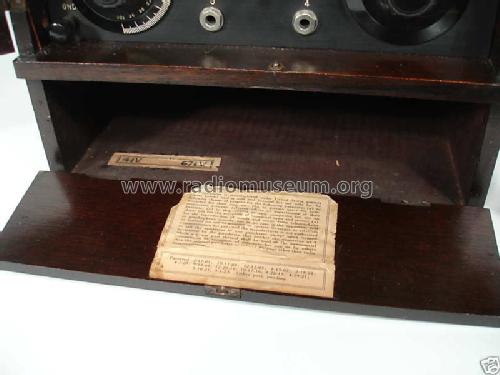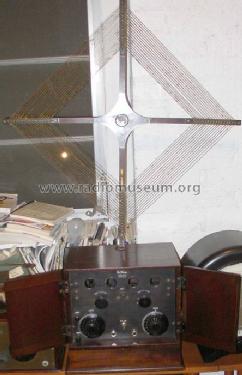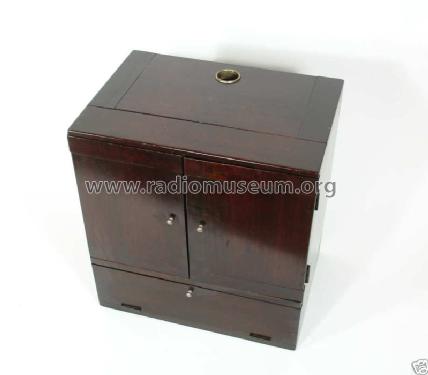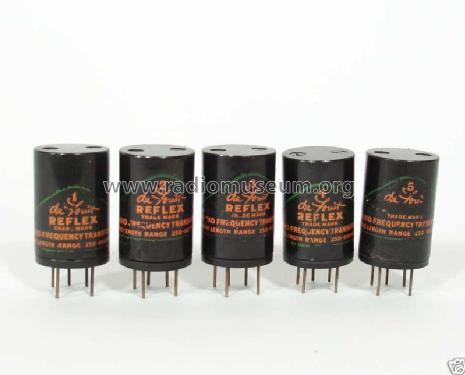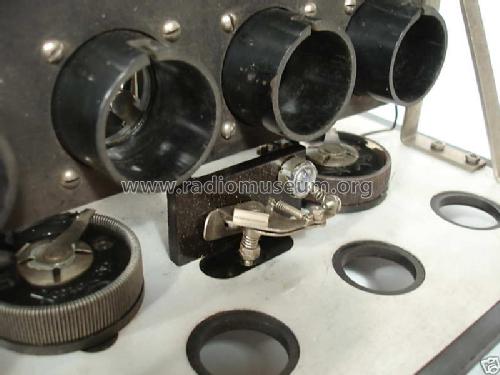- País
- Estados Unidos
- Fabricante / Marca
- DeForest Radio Telephone & Telegraph Co. (De Forest); New York
- Año
- 1923
- Categoría
- Radio - o Sintonizador pasado WW2
- Radiomuseum.org ID
- 37074
-
- alternative name: Lee De Forest Mfg.
Haga clic en la miniatura esquemática para solicitarlo como documento gratuito.
- Numero de valvulas
- 4
- Principio principal
- RFS (Radio Frecuencia Sintonizada) en general; ZF/IF 3 kHz; 3 Etapas de AF; Reflex
- Número de circuitos sintonía
- 1 Circuíto(s) AM
- Gama de ondas
- OM (onda media) solamente
- Tensión de funcionamiento
- Pilas / 4.5 & 67.5 Volt
- Altavoz
- - Este modelo usa altavoz exterior (1 o más).
- Material
- Madera
- de Radiomuseum.org
- Modelo: D10 - DeForest Radio Telephone &
- Forma
- Sobremesa, caja, normalmente con tapa (panel no inclinado).
- Ancho, altura, profundidad
- 320 x 350 x 230 mm / 12.6 x 13.8 x 9.1 inch
- Anotaciones
-
One dial (primary tuning control knob). The D-10 is a 4-tube reflex receiver, using a crystal detector. Either Frank Squire or William Priess (the self-proclaimed "father of reflex") developed the D-10, although Gernsback gives credit for the invention of reflex to Marius Latour. In the D-10, two tubes have both RF and audio amplification functions. So, the receiver performs as a 6-tube radio (three stages of RF amplification and three stages of audio amplification) seven if the detector is considered. Reflexing is a rather sophisticated electrical design technique, since the interstage RF and audio transformers are arranged so that a single tube can perform two functions. For more information see "Antique Radio Classified" Volume 14, August 1997.
- Peso neto
- 7.2 kg / 15 lb 13.7 oz (15.859 lb)
- Precio durante el primer año
- 150.00 $
- Ext. procedencia de los datos
- Ernst Erb
- Procedencia de los datos
- Radio Collector`s Guide 1921-1932
- Referencia esquema
- Rider's Perpetual, Volume 1 = 1931/1934 (for 1919-1931)
- Mencionado en
- Collector's Guide to Antique Radios 4. Edition
- Documentación / Esquemas (1)
- Radio Manufacturers of the 1920s, Vol 1 (page 176)
- Documentación / Esquemas (2)
- Radio Broadcast, Aug. 1923, Page 338
- Documentación / Esquemas (3)
- Le Guide du Collectionneur TSF Biraud/Foster, Vol. I (page 146)
- Otros modelos
-
Donde encontrará 158 modelos, 133 con imágenes y 16 con esquemas.
Ir al listado general de DeForest Radio Telephone & Telegraph Co. (De Forest); New York
Colecciones
El modelo es parte de las colecciones de los siguientes miembros.

